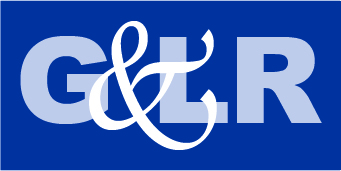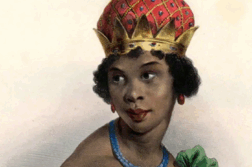For older GLBT adults and others concerned with aging issues as they affect our community, the progress we need in federal policy is in some ways a matter of simply “getting to neutral.” Of course, there is nothing simple about it.
But the fact is that the federal government has a pervasive presence in the aging field, which is shaped to a substantial degree by federal funding and policy priorities. Given that the federal government plays such a decisive role, a strong argument can be made that we would make dramatic progress if the feds would do no more than consistently take account of the particularized interests of older GLBT people when making policy and funding decisions.
Part of the reason “getting to neutral” is such a big challenge, even under a friendly Obama Administration, is because for decades the federal government has made aging policy as though older gay people did not exist. In fact, experts estimate that there are between two and four million who are age sixty and older. While they confront the same issues as all older people, they also face additional realities. Research indicates that older GLBT people are half as likely to be partnered, twice as likely to live alone, and four times as likely to be childless as other older people. All this adds up to an older population with far thinner support networks. Add discrimination in services and government benefits to the mix, and the barriers to healthy aging can be quite daunting for lesbian and gay elders.
The notion of special populations of older people with particular needs is not new to federal policy. In recent years, the federal government has gradually taken steps to address the particular concerns of older people of color and others whose lived experience and aging needs are distinctive. A “neutral” federal aging policy would address the unique needs of older GLBT people in the same manner.
One obstacle to pushing the federal government to “neutral” when it comes to older GLBT people has been the community itself. Changes in public policy do not come easily, especially when that policy reflects the historic and systematic marginalization of a group of people. Progress requires asking and organizing for change. But until recently, our community (or at least the part of it that gets noticed in our nation’s capital) was almost as bad as the federal government when it came to recognizing and prioritizing the needs of its older members.
Against this backdrop, what happened in GLBT aging policy over the past year—the first for the Obama Administration—has to be seen as remarkable. The confluence of two big developments—the recent emergence of an increasingly effective GLBT aging advocacy push and the new administration—is creating the opportunity for a seismic leap forward for older gay people. Early evidence of this great potential for progress emerged during the Obama Administration’s first year.
It shouldn’t have taken our community so long to step up to the plate on aging issues. SAGE (then Senior Action in a Gay Environment, later Services & Advocacy for GLBT Elders) was founded in 1977, part of the first wave of modern gay organizations to emerge. (The National Gay & Lesbian Task Force was founded in 1973, the Human Rights Campaign Fund in 1980.) Older people were prominent in the broader progressive movements of the times, thanks to organizations like the Gray Panthers. Nonetheless, for many years aging issues were largely invisible in gay politics and missing from the change agenda that our community pushed for at the federal, state, and local levels. Indeed, ageism and the marginalization of older people within our community have been pervasive.
In the 1990’s, SAGE launched its national GLBT aging conferences while gay and lesbian members of the American Society on Aging started shaking up the “mainstream” aging world. The National Gay & Lesbian Task Force’s Aging Initiative culminated in the 2000 release of the ground-breaking report Outing Age. In 2005, SAGE became the first official GLBT delegate at a White House Conference on Aging. More recently, major funders like the Arcus Foundation and Atlantic Philanthropies have invested significantly in a joint SAGE-Task Force aging advocacy initiative. In 2009, SAGE became the first GLBT member of the influential national Leadership Council of Aging Organizations.Also last year, the Task Force launched its New Beginnings project, an initiative designed to provide the incoming Administration with a comprehensive agenda for policy change across all federal agencies. As a result of these developments, this community was poised to organize for change for its older members when President Obama was inaugurated.
Aging issues were not a focus of the 2008 presidential campaign. Nonetheless, candidate Obama’s repeated promises of progress for GLBT people and his campaign’s emphasis on financial security seemed to offer great hope for advances on the aging front. Unlike signature issues like “Don’t ask, don’t tell” and marriage equality, aging has not been a hot-button issue for the far right. It was the hope of SAGE and other advocates that securing a modicum of support for older gay adults—getting to neutral, if you will—might be doable early on, in part because it was so important to a marginalized constituency yet would not be likely to stir great political controversy.
We received encouraging news early on when the Obama Administration nominated Kathy Greenlee to head the U.S. Administration on Aging (AoA). Greenlee not only had deep expertise in aging issues and a longstanding working relationship with Health and Human Services Secretary Katherine Sebelius; she was also at one time the co-chair of the GLBT advocacy organization Equality Kansas.
Over the past year, advocates working with the Obama Administration have emphasized access, GLBT-inclusive policymaking, and funding. Considerable progress has been made in a short period of time on these three fronts:
Access. In order to have an impact on federal policy, you first have to get a seat at the tables where federal policy is made. Thanks in part to the groundwork laid by SAGE, the Task Force, and other organizations in the years prior to President Obama’s arrival, GLBT aging advocates have gained important access to the Administration during its first year. SAGE and the Task Force have been invited to participate in several small policy meetings at the White House, including one that brought together key aging policy organizations like AARP and the National Council on Aging to discuss the impact of health care reform on seniors. The two organizations secured their first meeting with Assistant Secretary Greenlee early in her tenure and were given the opportunity to identify what it would mean for the federal government to “get to neutral” on GLBT aging issues.
GLBT-Inclusive Policy. Older gay adults scored a big breakthrough last October when the U.S. Administration on Aging announced plans by the federal government to create a Technical Assistance Resource Center to promote support for GLBT elders. This announcement epitomized the importance of “getting to neutral”: similar federally-sponsored centers previously have been created for other older populations facing particular challenges, including African-Americans, Native Americans, Hispanics, and Asian-Americans. But the federal government had had a blind spot when it came to GLBT aging issues until the AoA announcement. The Resource Center is a major breakthrough because it will dramatically increase the capacity of federal agencies to serve older gay people. The AoA’s announcement is also transformational in that it represents the federal government’s first official recognition that older GLBT people have particular needs, and that the government has a responsibility to address them. The declaration could not have been clearer: “With the full support and encouragement of the current Administration,AoA now recognizes that older gay, lesbian, bisexual and transgender individuals represent a community with unique needs that must be addressed. … AoA hopes to foster a national dialogue that brings new focus and positive action resulting in higher quality and more competent service delivery to older gays, lesbians, bisexuals and transgender individuals across the nation.”
Funding. Every year, the federal government distributes hundreds of millions of dollars to support aging programs across the country, making it the largest funder of aging services. Amazingly, until recently no such funds had ever been awarded to a GLBT service provider by the U.S. Administration on Aging. That changed last fall, when the AoA awarded a first-of-its-kind, highly competitive multi-year contract to the Los Angeles LGBT Community Service Center to expand an exciting new program for seniors. This was one of a dozen grants awarded by AoA to innovative community-based senior programs around the country. Obviously, one grant does not erase years of being shut out of federal funding for aging. But it was an early sign that the Administration on Aging under President Obama will not exclude GLBT service providers but will award the kind of need-based funding that it provides for numerous other older populations.
The progress of the past year has been impressive, but much remains to be done. There are a number of egregious federal policies that the Administration and Congress must rectify in the years ahead. For example, the vast majority of Americans rely on Social Security for at least half of their retirement income; meanwhile, GLBT elders lose $124 million a year because same-sex couples cannot draw on each others’ Social Security benefits. Moreover, if an elderly lesbian or gay man needs to rely on Medicaid to enter a nursing home, their partner generally will lose their home because of Medicaid’s “spend-down” requirements. And federal aging research still ignores the existence of older gay people, making it impossible to document their numbers and needs. (This, in turn, helps the right-wing Family Research Council with its argument that such support is “unnecessary spending” because “In reality, HHS has no idea how many GLBT seniors exist. No one does!”)
Congress and the Obama Administration need to address these issues. Simultaneously, the U.S. Administration on Aging can help change the landscape for older GLBT people in communities across the country by encouraging “cultural competency” in service delivery through better funding, technical assistance, and administrative guidance that makes it clear to the aging network that the needs of this population will no longer be ignored.
Michael Adams is the executive director of SAGE (Services & Advocacy for GLBT Elders) in New York.




